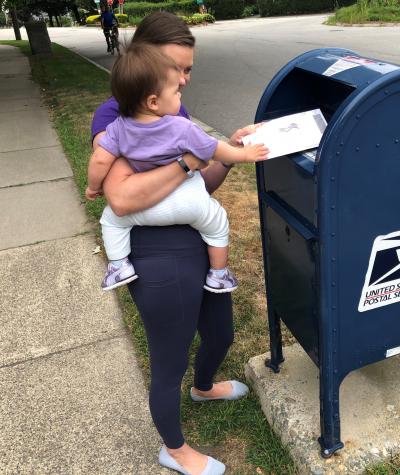I’m sure I had vaguely understood what feminism was in high school. But it wasn’t until I got to college that I started hearing murmurs that women could do anything. What a strange thing to say, I thought.
I attended an all-girls high school, so whenever someone won an award for being the best at something, it was a girl—fastest runner, highest jumper, strongest gymnast, or smartest student—they were all girls. The idea that one sex could, or should, do something that the other couldn’t (aside from produce children, though that was far from my mind back then) took a while to sink in.
Sure, I had learned about the women’s suffrage movement in high school, just as I had learned about world wars, the civil rights movement, and the moon landing. All were things from “the olden days”, all ended successfully for the good guys, and we had moved on. Or so I thought.
It’s been twenty years since my naïve little self graduated high school, and I’ve since seen skyscrapers destroyed by airplanes, wars involving countless countries, movements for Black Lives and #MeToo take to the streets, and I’ve even watched several rovers land on Mars.
Though science took us beyond the Moon, it turns out the work of social movements (and world peace) isn’t always about marching further forward, sometimes we have to retrace old steps to get back to what we had thought was the starting line.
The Nineteenth Amendment was ratified one hundred years ago today. According to the words on the page, it allowed all women in the U.S. to vote.
But, just as Black men didn’t see the promise of the Fifteenth Amendment (which prohibits the denial or abridgement of the right to vote based on race) for a hundred years, Black women also largely had to wait until the Voting Rights Act of 1965 to get something close to universal enfranchisement. With voting rights, implementation is everything.
Likewise, women still face barriers to voting on many fronts. Take photo ID laws. Often, there can be confusion when a married woman’s maiden name is on the voter rolls, but her ID has her new last name. Or excuse-only absentee voting where the disproportionate time women spend on childcare can make voting in-person a challenge.
As in my youth, I am one of the lucky ones. Last year was a big year for me, I became a U.S. citizen, I moved from the Midwest to Massachusetts, and I welcomed a perfect little daughter into the world. Not only am I now eligible to vote, but I have a little future voter to share my excitement with.
When I got my driver’s license in Boston, I checked a box and told the state I wanted to register to vote. A few weeks later, my voter registration card arrived in the mail. COVID-19 came along, and Gov. Charlie Baker allowed everyone to vote by mail and arranged for absentee ballot request forms to be automatically sent to every registered voter.
I can vote without endangering my family’s health, or anyone else’s.
You shouldn’t need to be lucky to exercise your constitutional right to vote. I work at Campaign Legal Center (CLC) because I want to remove the barriers making it more difficult for people to register, vote, and have their ballot counted.
My work in particular focuses on how that vote translates to representation. Every voter should be able to participate in a meaningful way. I want a pluralist democracy where everyone’s voices are heard, not just those of rich and powerful insiders.
When she goes to school, I hope the America my daughter grows up in has universal enfranchisement and a democracy powered by its people. I want to see the shock on her face when I tell her that there used to be voter suppression, gerrymandering, and politics awash with money from special interests.
I hope she’ll find that as surprising as the idea that people used to think that there were things women couldn’t do.
